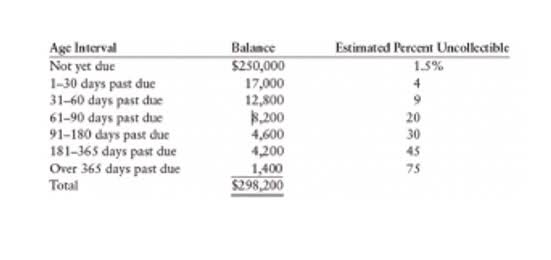Equity Formula Definition How to Calculate Total Equity?

Because they’re built on ideas or intellectual property, not physical assets. If you’re comparing two companies in the same sector, equity can offer extra context. This is especially the case in capital-heavy industries like mining , manufacturing or banking , where assets and liabilities play a big role. These are usually available in annual reports, quarterly earnings reports , Australian Securities Exchange (ASX) announcements , or through financial data platforms. Owners of a company (whether public or private) have shares that legally represent their ownership in the company.
Equity Ratio
- This is because the net accumulated losses are deducted from the retained earnings.
- As market conditions fluctuate, it’s crucial to regularly update and adjust equity figures to reflect the current financial landscape accurately.
- When shareholder equity is positive, it can be a sign the company is in decent shape.
- Shareholder equity is reflected in the balance sheet, which is one of the key financial statements that companies use to report their financial position.
- As you can see there is a heavy focus on financial modeling, finance, Excel, business valuation, budgeting/forecasting, PowerPoint presentations, accounting and business strategy.
- For example, if your company acquires 60% of another business, you’ll need to consolidate their accounts into your financial statements.
- Finally, add the market capitalization to the total debt and subtract any cash and cash equivalents from the result.
A company’s stock could be more risky if its D/E ratio significantly exceeds those of others in its industry. Preference shares, on the other hand, are a type of stock that provides certain advantages over equity shares. Preference shareholders have a fixed dividend, which must be paid before dividends are distributed to equity shareholders. In case of liquidation, preference shareholders are paid before equity shareholders but after creditors.
- Shareholders of equity shares have voting rights and are entitled to dividends.
- On the downside, consolidation disadvantages might involve the risk of obscuring individual entity performance and increased administrative burdens.
- This equation is the basis for the balance sheet, which summarizes a company’s financial position at a specific point in time.
- This essentially tells us the net worth of the company from the perspective of its shareholders.
- Adam received his master’s in economics from The New School for Social Research and his Ph.D. from the University of Wisconsin-Madison in sociology.
- Investors can compare a company’s D/E ratio with the average for its industry and those of its competitors to gain a sense of a company’s reliance on debt.
Equity Multiple vs. Cash on Cash Return: What is the Difference?
It also owes $4 million in liabilities – things like loans, unpaid bills, and wages. If a company sold everything it owned and paid off every last debt, shareholder equity is what would be left for the shareholders. Companies can issue new shares by selling them to investors in exchange for cash. Companies use the proceeds from the share sale to fund their business, grow operations, hire more people, and make acquisitions. Once the shares have been issued, investors can buy and sell them from each other in the secondary market (how stocks normally trade on an exchange).

Private equity funds
The cost of equity can mean two different things, depending on who’s using it. Investors use it as a benchmark for an equity investment, while companies use it for projects or related investments. As of Sept. 30, 2024 (the end of the company’s fiscal year), Apple had an accumulated deficit of $19.2 billion. The company also reported an accumulated other comprehensive loss of $7.2 billion.
- This approach provides a clear, holistic view but requires careful navigation of consolidation challenges to avoid misstatements and guarantee accurate reporting.
- Very high D/E ratios may eventually result in a loan default or bankruptcy.
- The liabilities comprise short-term debts, long-term debts, and other liabilities recorded on the balance sheet.
- A company’s share price is often considered to be a representation of a firm’s equity position.
- These calculations highlight how the equity formula helps determine a company’s financial health and inform investment decisions.
The debt-to-equity ratio is a financial metric that compares a company’s total debt to its shareholder Airbnb Accounting and Bookkeeping equity. It measures the company’s financial leverage and shows how much of the company’s financing comes from debt as opposed to equity. The equity ratio calculates the proportion of a company’s total assets financed using capital provided by shareholders.

The Crisis of unaffordable audits: How businesses can save costs

Equity can also be defined in non-financial contexts, such as social equity. This refers to fairness and equal access to opportunities irrespective of a person’s background or characteristics. In the context of finance and investments, however, equity determines the what is the formula for determining equity value and potential of a company or asset. The resulting ratio above is the sign of a company that has leveraged its debts.

Common Mistakes While Calculating Equity
All figures and data in this article were accurate at the time it was published. That said, financial markets, economic conditions and government policies can change quickly, so it’s a good idea QuickBooks to double-check the latest info before making any decisions. But knowing what it is (and where it shows up) can help you read between the lines. Things like brand reputation, customer loyalty, or future potential don’t show up in the numbers. And in some industries, those can be worth more than the assets on the books.
Difference Between Equity and Preference Shares
Besides his extensive derivative trading expertise, Adam is an expert in economics and behavioral finance. Adam received his master’s in economics from The New School for Social Research and his Ph.D. from the University of Wisconsin-Madison in sociology. He is a CFA charterholder as well as holding FINRA Series 7, 55 & 63 licenses. He currently researches and teaches economic sociology and the social studies of finance at the Hebrew University in Jerusalem. While it can be confusing to see or hear the term used in so many ways, always remember that equity is fundamentally about ownership, and the value of ownership.

